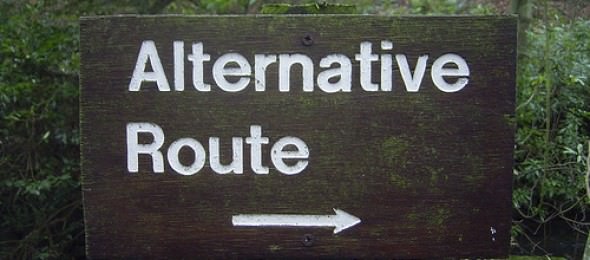The following is part 1 of a 5 part overview of Professors Thomas Stipanowich (Pepperdine University School of Law) and J. Ryan Lamare (Pennsylvania State University) paper entitled “Living with ‘ADR’: Evolving Perceptions and Use of Mediation, Arbitration and Conflict Management in Fortune 1,000 Corporations.” The paper is a must read for anyone in the Alternative Dispute Resolution field.
Part One: A Brief History of ADR and Corporate Perception
The history of Alternative Dispute Resolution in the last fifty years has seen much change. According to Thomas Stipanowich and Ryan Lamare’s research, much of out-of-court conflict resolution from the 1950s-1980s was represented by binding arbitration. Motivated by cost savings and speedy resolution, as studies have illustrated, the arbitration process was perceived as an effective alternative to litigation. They do note that during this time period, though comparable to a jury and a judge, the quality and selection of arbitrators acquired negative connotations. Stipanowich and Lamare write that much of this concern was associated with lack of judicial oversight.
As binding arbitration remained a comfortable alternative, Stipanowich and Lamare describe a “Quiet Revolution,” which continued to be motivated by reducing cost and risk associated with litigation. They cite a 1998 study which reported both a nine-fold and ten fold increase in legal costs over the ten years prior to the study, again demonstrating the pressure to develop an appropriate conflict resolution method.
In 1979, the Center for Public Resources, later to be known as the International Institute for Conflict Prevention and Resolution (CPR), was formed. CPR influenced the law culture, promoting alternatives to court trials. One example of this was the CPR Commitment*, where corporate general counsel and managing partners- representatives of more than 4,000 corporations pledged their commitment to resolving disputes without litigation.
Twenty-five years later, the word had spread. Not only were companies turning to binding arbitration, they were using mediation, fact finding, non-binding arbitration, and early neutral evaluation. Stipanowich and Lamare show that of these methods, mediation had become the most used alternative. The quiet revolution was also spurred on by companies forming internal conflict management systems.
At this point, there had not been a survey to quantify the trends in ADR outside of specific industries. Construction industry professionals and attorneys were surveyed in 1994. The results reflected an industry that was familiar with ADR and though employed arbitration, preferred mediation as a more satisfactory process due its ability to preserve relationships among other things.
In 1997, Cornell University surveyed Fortune 1,000 corporate counsel on the topic of ADR and concluded, “ADR practice is not haphazard or incidental but rather seems to be integral to a systematic, long-term change in the way corporations resolve disputes.” Stipanowich and Lamare suggest that the study “greatly overstated” these conclusions as to the integration of ADR. They write that four-fifths of the respondents reported engaging in mediation or arbitration “occasionally,” “rarely,” or “not at all,” although 87 percent of the respondents had been involved in some sort of mediation process from 1994-1997.
The survey data also showed a trend in multi-step dispute resolution that was reflected in respondents experiencing mediation followed by arbitration when the mediation process did not succeed. Data revealed respondents tended to use arbitration “because the contract said so,” because it saved money, and because it saved time. Overall though, data indicated that mediation was the preferred method of conflict resolution.
Stipanowich and Lamare highlight the perceived barriers to mediation and arbitration in the 1997 survey. Barriers in mediation were associated with willingness of parties to participate in the processes. Forty percent of respondents also viewed the lack of binding agreements as barriers to mediation. More concern was voiced with arbitration. Percieved barriers included difficulty of appeal, issues with adhering to legal rules, compromised outcomes, and lack of confidence in neutrals.
The last aspect of the Fortune 1,000 survey explored the role of alternative dispute resolution in workplace conflict resolution. Surveyors hypothesized based on previous surveys that management of conflict was becoming more systematic, but the results of the 1997 survey indicated that companies generally responded reactively to workplace disputes. Stipanowich and Lamare indicated that only one and ten respondents used an ombudsman or peer review.
Not since this 1997 survey have the perceptions and experiences of Fortune 1,000 legal counsel on alternative dispute resolution been revisited. Part 2 in this series will summarize the 2011 Fortune 1000 survey and it’s refined approach to revealing perceptions of alternate conflict resolution. Stay tuned!











